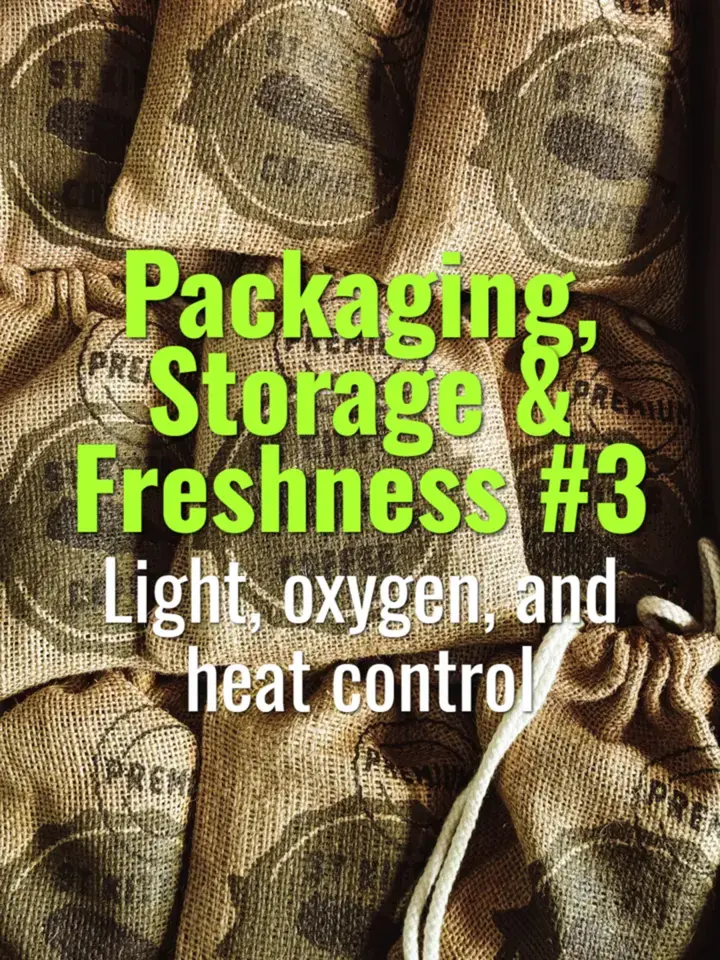Light, oxygen, and heat control
How light, oxygen, and heat accelerate staling in roasted coffee, and best practices for controlling these factors in storage and packaging.
- Coffee Basics Nerds
- 1 min read
Article 3 of 12 in Packaging, Storage & Freshness/

Oxygen
- Main enemy of freshness: drives oxidation of oils and aromatics.
- Leads to flat, rancid, or cardboard-like flavors.
- Controlled by:
- One-way valves to vent CO₂ while blocking oxygen.
- Nitrogen flushing before sealing.
- Airtight, resealable packaging.
Light
- UV exposure degrades coffee oils and aromatics.
- Transparent packaging accelerates staling.
- Controlled by:
- Using opaque or foil-lined bags.
- Avoiding clear containers unless stored in dark cupboards.
Heat
- Higher temperatures accelerate chemical reactions, speeding up staling.
- Best storage is cool, dry, stable (~15–20°C / 59–68°F).
- Avoid leaving bags near ovens, windows, or in hot cars.
Combined Risks
- Oxygen + Heat → rapid rancidity in oils.
- Light + Heat → accelerates photo-oxidation.
- Poorly sealed, clear packaging is most vulnerable.
Practical Recommendations
- For roasters: Use multi-layer barrier bags with one-way valves.
- For consumers: Store beans in airtight containers, away from light and heat.
- Avoid refrigeration (moisture risk) unless vacuum-sealed; freezing works if beans are sealed properly.
Summary
Roasted coffee’s worst enemies are oxygen, light, and heat, all of which accelerate staling. Effective packaging (valves, barrier bags) and proper storage (cool, dark, airtight) are essential for maintaining freshness and flavor integrity.